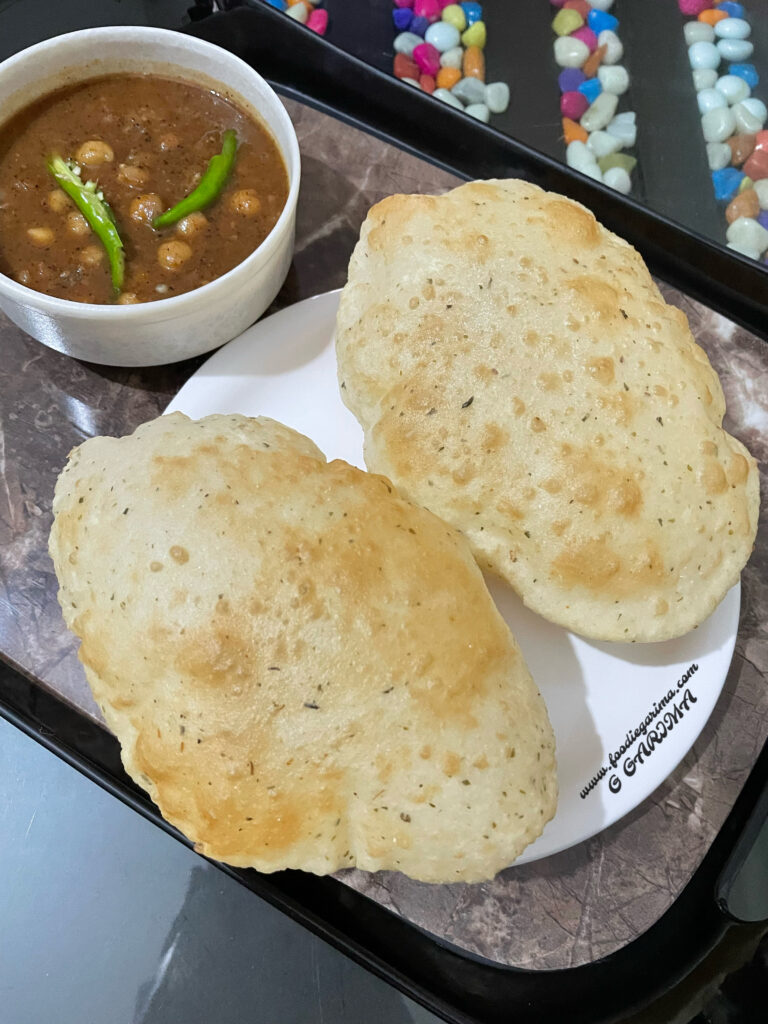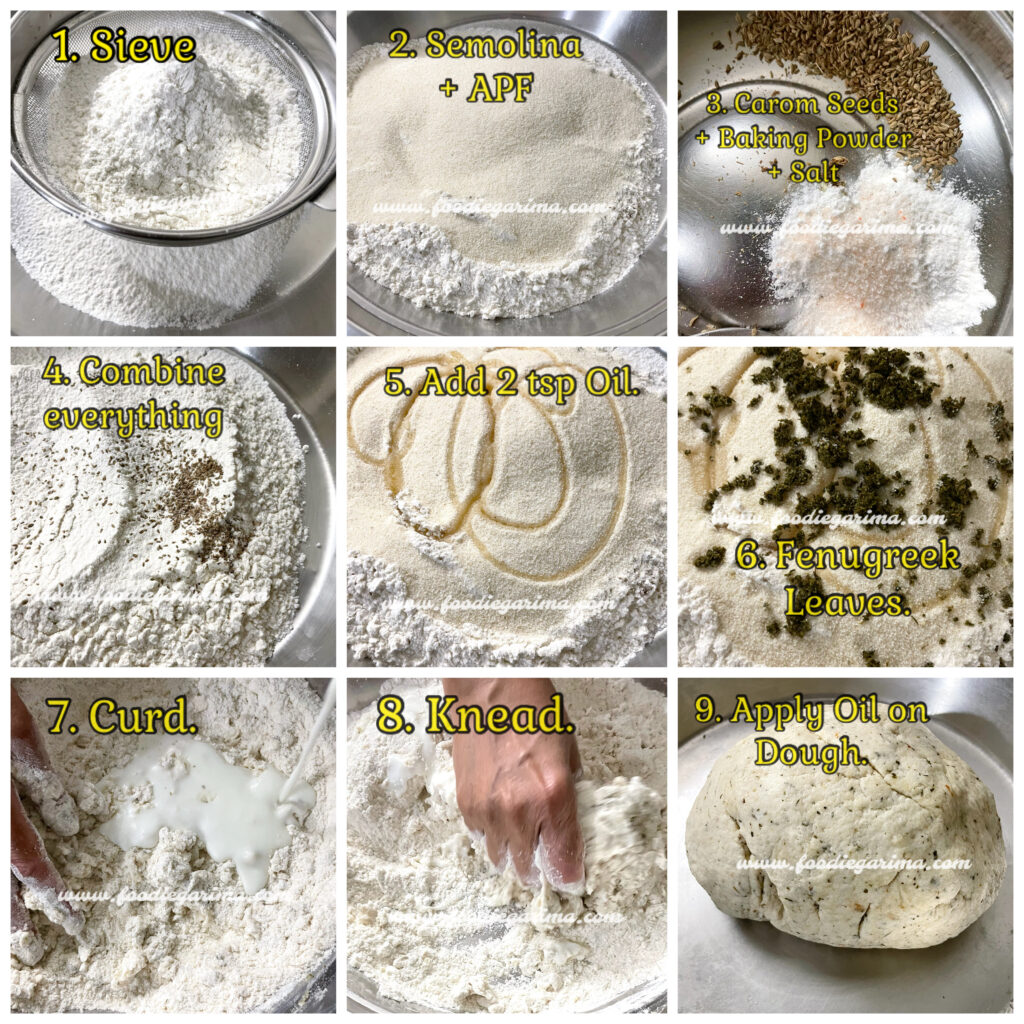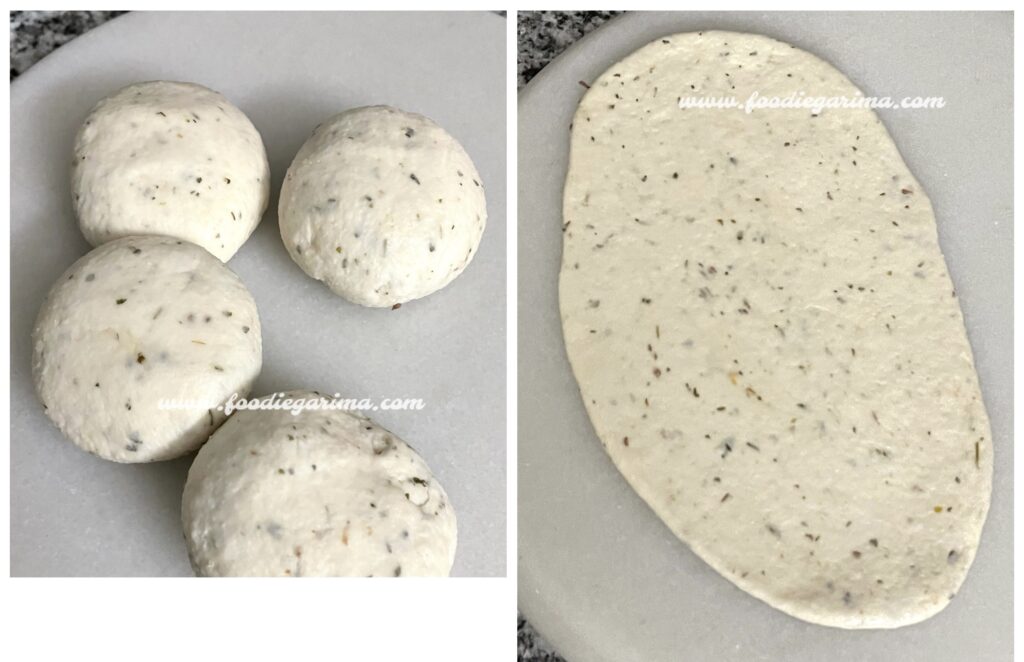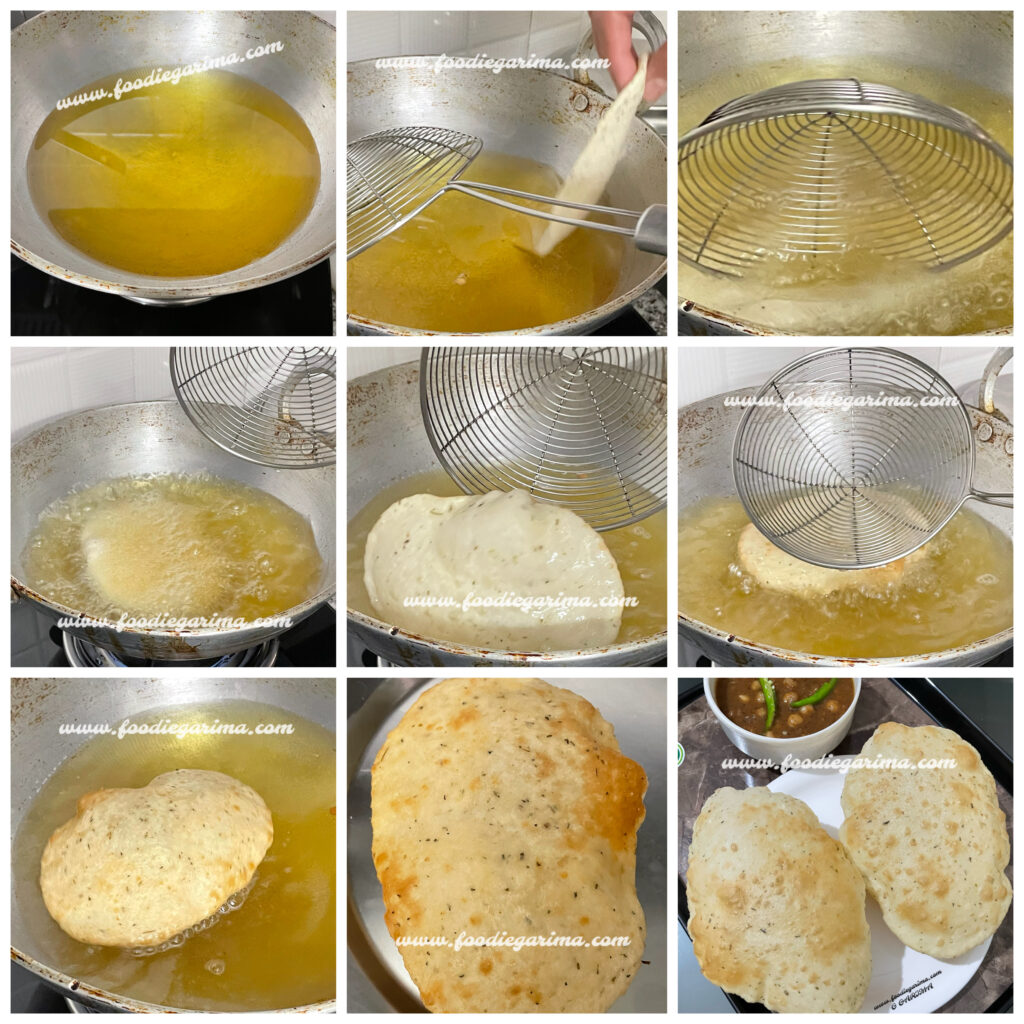6 December, 2023
BHATURA RECIPE | Without Yeast | Fluffy Bhatura

Bhatura Recipe:
Indulging in the delightful world of Indian cuisine unveils a plethora of flavors and textures, and one such culinary gem is the beloved Bhatura. This recipe is your comprehensive guide to mastering the art of preparing this scrumptious dish right in your own kitchen.
INTRODUCTION:
Bhatura Taste and Texture:
Bhatura boasts a soft, fluffy texture with a crispy exterior. Its airy and light interior achieved through the fermentation of curd (yogurt) in the dough, gives it a pillowy consistency.
The taste of Bhatura is mildly tangy, with subtle hints of fermentation. The addition of curd (yogurt) imparts a delightful flavor.
Serving:
Bhaturas are typically served piping hot and often paired with spicy Chhole (Chickpea Curry) or sometimes with Aloo Chhole (Potato and Chickpea Curry). This pairing creates a harmonious blend of tastes.
Apart from curries, Bhaturas can be enjoyed with a variety of accompaniments such as Pickles and Raita (Yogurt-based condiment).
Origin of Bhatura:
The origins of Bhatura can be traced back to the northern regions of India, particularly Punjab and Uttar Pradesh. This delectable dish is very famous in Indian cuisine, cherished for its fluffy texture and delightful taste.
Variations in Bhatura Recipes
While the classic Bhatura recipe remains timeless, there are variations like adding spices or herbs to the dough, enhancing its flavor profile.
Bhatura Recipe: Here is the recipe to make perfect Fluffy Bhatura.

About 15 nos Bhaturas Servings
INGREDIENTS: (For Bhatura Recipe)
| 500 Grams All-purpose Flour (Maida) |
| 250 Grams Semolina (Sooji) |
| ½ tsp Carom Seeds (Ajwain) |
| ½ tsp Baking Powder |
| ¼ tsp Salt |
| 2 tsp Oil (for dough) |
| 1½ tsp Dried Fenugreek Leaves (Optional) |
| 5-7 tsp Sour Curd (Beaten) |
| Water as needed |
| Oil (for frying) |
INSTRUCTIONS:
1. Preparation of Dough:
- In a mixing bowl, sieve All-purpose Flour and Semolina.
- Crush the Carom Seeds by rubbing them for 2 seconds between the palms of both hands and then incorporate them into the flour.
- Further add Salt, Baking Powder, 2 tsp Oil and Dried Fenugreek Leaves. (I would recommend washing fenugreek leaves before using. Using dried fenugreek leaves is completely optional.)
- Combine everything and add beaten Curd.
- Start kneading the mixture.
- Add Water gradually (as and when needed) to form a smooth, elastic dough.
- When you initially start working with the dough, you might notice it being a bit sticky. However, don’t be concerned.
- Knead the dough thoroughly for about 10 minutes. As you knead, you’ll observe the texture becoming softer and smoother.
- After kneading, apply a small amount of oil all over the dough.

2. Resting the Dough:
- Cover the dough and let it rest for about 2 hours at room temperature, allowing the dough to rise and attain the desired texture. A perfect spot for resting the dough could be a warm area, such as a switched-off oven or any other warm area in the kitchen.
- During summer let it rest for about 2 hours, while in winter, it might require a bit longer or keep it overnight in winter.
- Patience is key while letting the dough rest; it enhances the Bhatura’s fluffiness.
3. Dividing and Rolling:
- Once the dough resting is done, give it a quick knead once more.
- Divide the dough into small portions or equal-sized small dough balls.
- Apply oil on all dough balls and roll each dough ball into a round or oblong shape using a rolling pin. Ensure the thickness is uniform for even cooking.
- If the dough sticks to the surface while rolling, lightly apply some oil to prevent sticking.
- Don’t apply any dry flour.

4. Frying the Bhaturas:
- Heat oil in a deep frying pan or kadhai (wok) on medium to high flame.
- Wait until the oil is smoking hot. Ensure the oil is hot enough before frying the Bhaturas to achieve a crispy texture.
- Carefully slide the rolled-out dough into the hot oil and gently press it down using a spatula. This technique aids in quick puffing.
- Flip the bhatura and fry until they puff up generously and turn golden brown on both sides.
- Remove excess oil by placing them on paper towels.
- Delightful Bhaturas are now ready to serve.


Achieving the perfect Bhatura involves meticulous preparation, including the kneading of the dough, resting it adequately, and frying it in hot oil to ensure the desired texture and taste.
Health Considerations:
While Bhaturas are a delight for the taste buds, they are deep-fried and high in calories. Enjoy them in moderation as part of a balanced diet.